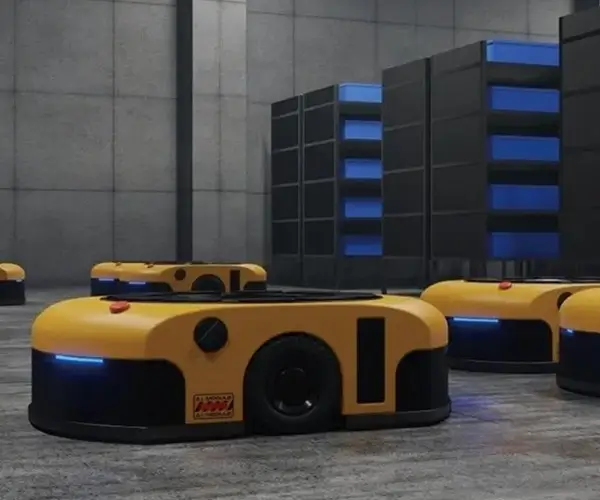Certainly! Here is the first part of the soft article on "Arduino Control Servo Motor with Joystick," crafted to be engaging and informative. I'll provide the second part afterward.

Imagine a world where your ideas leap off the page and into the physical realm, maneuvered with the flick of a wrist or the gentle push of a joystick. That’s the magic of integrating a servo motor with an Arduino microcontroller—an accessible yet powerful way to bring interactivity and automation into your projects. Whether you're a beginner eager to explore the fascinating convergence of hardware and software, or an experienced maker looking to refine your skills, mastering "Arduino control of servo motors with a joystick" unlocks a universe of possibilities.
Why Use Arduino and Servo Motors?
At the heart of many DIY robotics and automation projects lies the servo motor — a compact, precise actuator capable of rotating to a specific angle, based on the signals it receives. Unlike traditional motors, servos are designed to be controlled with remarkable accuracy and responsiveness, making them ideal for applications like robotic arms, camera gimbals, and even remote-controlled vehicles.
Arduino, the open-source microcontroller platform, simplifies the process of controlling hardware components like servos. Its user-friendly programming language, extensive community support, and compatibility with various sensors and actuators make it the perfect playground for inventors of all levels.
Getting Started: Hardware Required
Before diving into the wiring and coding, gather these essential components:
Arduino Uno Board: The brain of your project. Servo Motor (e.g., SG90 or MG90S): The actuator you'll control. Joystick Module (e.g., XY Analog Joystick): To provide user input. Connecting Wires: Jumper wires for connections. Breadboard: For prototyping and connecting components. Power Supply: For powering the servo reliably, especially when controlling multiple servos or higher torque models. Optional: Multimeter — To troubleshoot connections.
Understanding the Components
Servo Motor: Typically has three wires—power (usually red), ground (black or brown), and signal (yellow, orange, or white). The servo interprets pulse width modulation (PWM) signals to rotate to a specified position.
Joystick Module: Usually contains two potentiometers—one for the X-axis and one for the Y-axis—connected to analog inputs. It may also include a push-button switch.
Wiring Your Setup
Here's a simple way to connect your components:
Power the Arduino: Plug it into your computer or power supply. Connect the Servo: Red wire to 5V on Arduino. Black or brown wire to GND. Signal wire to a PWM-capable digital pin (e.g., D9). Connect the Joystick: VRx (X-axis) to analog pin A0. VRy (Y-axis) to analog pin A1. Power (VCC) to 5V. GND to ground.
Ensure all connections are solid. Use a breadboard for easy wiring, and consider powering the servo separately if it draws significant current to avoid resets or voltage drops.
Programming: The Heart of Control
Once hardware is up, the magic begins in software. Arduino IDE provides a straightforward environment for coding your control system.
First, include the Servo library:
#include
Create a servo object and declare variables for readings:
Servo myServo; int joystickXPin = A0; int servoPin = 9; int joystickXVal = 0; int servoPos = 90; // Starting at middle position
In the setup() function, initialize components:
void setup() { myServo.attach(servoPin); Serial.begin(9600); // For debugging myServo.write(servoPos); // Set initial position }
In the loop() function, read the joystick, map the input to servo angle, and write commands to the servo:
void loop() { joystickXVal = analogRead(joystickXPin); // Read X-axis // Map the 0-1023 value to 0-180 degrees servoPos = map(joystickXVal, 0, 1023, 0, 180); myServo.write(servoPos); delay(15); // Allow servo to reach position }
This code continuously reads the joystick position, translates it into a servo angle, and commands the motor accordingly.
Fine-Tuning the Control
To make your project more refined, consider adding dead zones (areas where small joystick movements don’t cause motion) to prevent jitter, or implement smoothing algorithms to make the movement more fluid.
You can also extend this setup to control multiple servos, or to interpret the Y-axis for additional control axes, enhancing your project's interactivity.
Stay tuned for Part 2, where we’ll explore complex project ideas, troubleshooting tips, and ways to expand your Arduino-joystick-servo system into innovative creations.
Kpower has delivered professional drive system solutions to over 500 enterprise clients globally with products covering various fields such as Smart Home Systems, Automatic Electronics, Robotics, Precision Agriculture, Drones, and Industrial Automation.




































